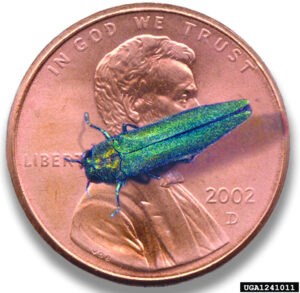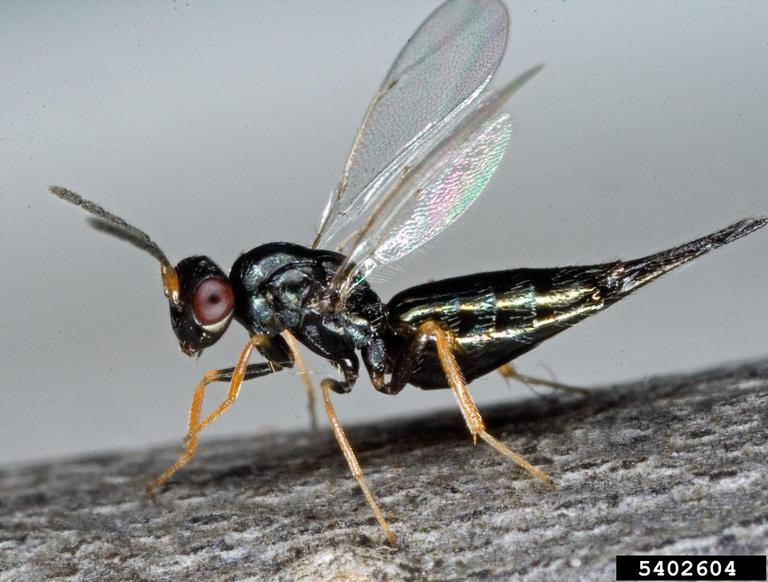Emerald Ash Borer – 10 Years Later
- 2023-05-04
- By mkirk
- Posted in Horticulture, The Garden Buzz
By Pam Rosendal, Colorado Master Gardener

Emerald Ash Borer, Photo: Howard Russell, Michigan State University, bugwood.org
Emerald Ash Borer (EAB) is an iridescent green beetle, native to China, that was first identified in the U.S. in 2002. In that time, EAB has killed more than 100 million ash trees from the east coast to Colorado, costing around $1 billion each year. The first time EAB was discovered in Colorado was in Boulder in 2013. Approximately 15% of the trees in Colorado urban areas are ash, with an estimated 1.45 million ash trees in the Denver Metro area. With what’s at stake in mind, an update on the status of EAB ten years after its appearance in Colorado seems warranted.

Ash infested with EAB, Photo: Daniel Herms, The Ohio State University, bugwood.org
As expected, EAB has spread, but slower than anticipated. By 2015, it was assumed to have infested the entire city of Boulder. From there, it has been confirmed in the areas surrounding Boulder: Gunbarrel, Longmont, Lyons and unincorporated Larimer county to the north, as well as Superior and Broomfield to the south and east. The most recent detections have been in Adams county (2019), Fort Collins (2020), Erie (2021) and Thornton (2022). The sighting in Thornton is the first time EAB has been found east of I-25. So far, there has been no sign of EAB in Arapahoe county.

Parasitoid wasp (Tetrastichius Planipennisi), Photo: David Cappaert, Michigan State University, bugwood.org
Advice to homeowners has remained much the same: identify the ash trees in your landscape and develop a plan to handle EAB when it is detected in your community. There are a number of effective treatment options currently available to protect ash trees against EAB. Remember, EAB will kill all unprotected ash trees. They have no natural resistance to it and there are no endemic predators of EAB. Researchers are working to find new controls for EAB. For several years, the U.S. Department of Agriculture’s Animal and Plant Health Inspection Service (APHIS) and the U.S. Forest Service have been researching the use of EAB’s natural enemies–stingless wasps known as parasitoids–to use as a biological control to manage EAB infestations. The four species of wasps being studied specifically hunt and kill EAB, which helps reduce the numbers of EAB available to infest trees. The most recent study showed the wasps killed 20-80% of EAB in small to mid-size ash trees. The parasitic wasps do not bother humans, pets or other insects. They target EAB. While this approach to EAB control is still being studied and is not yet commercially available, it holds promise as another means of EAB management in the future. More information about EAB research is available on the APHIS website.
Horticulture Resources
- Garden Buzz Archives
- CSU Extension Resources
- Colorado Master Gardener Program
- Foothills to Plains Native Plant Master Program
- Native Bee Watch Community Science Program
- The Co-Hort Blog
- PlantTalk Colorado
- Soil Testing
- Plant Select
- Emerald Ash Borer
- Japanese Beetle
- Colorado State Forest Service
- Ask an Expert


